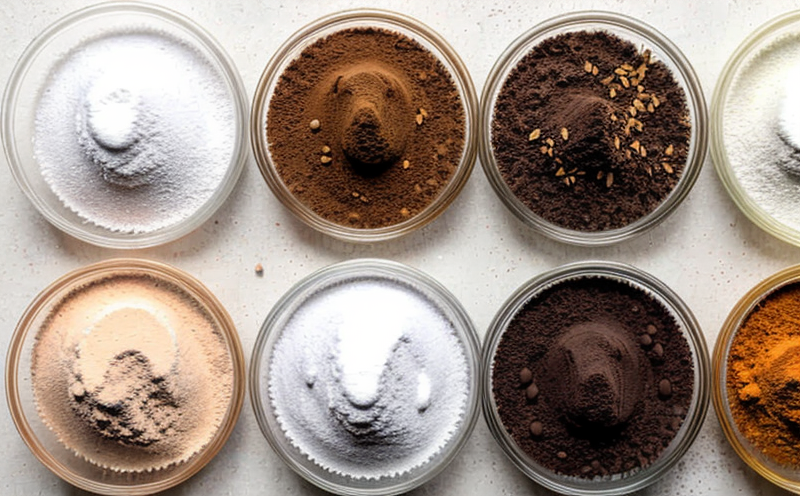FDA Guidance Aspartame and Sucralose Profiling in Foods
The Food & Drug Administration (FDA) plays a pivotal role in ensuring the safety of food additives, including sweeteners like aspartame and sucralose. These artificial sweeteners are widely used due to their zero-caloric nature, making them popular choices for reducing sugar intake while enhancing taste profiles. However, proper profiling is necessary to ensure they meet regulatory standards without compromising product integrity.
Aspartame (E951) and sucralose (E962) are two of the most commonly used sweeteners in food products. Understanding their behavior within various food matrices is essential for ensuring compliance with FDA guidelines. This includes not only detecting these additives but also quantifying them accurately to ensure they do not exceed safe levels as prescribed by the agency.
The FDA provides specific guidance documents that outline acceptable methods and criteria for testing and profiling these sweeteners in foods. Compliance with these guidelines ensures products remain safe for consumption, which is critical given consumer concerns about health and wellness. Laboratories specializing in food analysis must stay abreast of these regulations to provide reliable results.
Profiling aspartame and sucralose involves more than just simple detection; it requires detailed analysis that can account for degradation products, impurities, and potential interactions with other ingredients present in the food matrix. Modern analytical techniques such as High Performance Liquid Chromatography (HPLC) coupled with Mass Spectrometry (MS) offer precise quantification capabilities necessary for meeting FDA standards.
Accurate profiling also helps manufacturers identify any issues early on during product development or production processes, allowing them to make adjustments if needed. This proactive approach can prevent costly recalls and maintain consumer trust. Furthermore, understanding how these sweeteners behave in different food types allows companies to innovate new products that meet both regulatory requirements and market demands.
For quality managers and compliance officers working within the food industry, staying informed about FDA guidance on aspartame and sucralose is crucial. By adhering strictly to specified procedures and maintaining detailed records of all analyses conducted, organizations can demonstrate their commitment to producing safe and compliant products. This not only protects consumers but also enhances brand reputation.
In summary, FDA guidance on aspartame and sucralose profiling in foods encompasses much more than just compliance; it involves thorough understanding and application of analytical methods designed specifically for these sweeteners. Laboratories equipped with the right expertise can offer services that meet or exceed regulatory expectations while providing valuable insights into product development.
Industry Applications
- Beverage manufacturing: Ensuring low-calorie beverages contain only approved sweeteners within allowable limits.
- Candy and confectionery production: Verifying the presence and concentration of aspartame in hard candies or gum bases.
- Bakery products: Checking for correct addition levels of sucralose in bakery items like cakes or pastries.
- Pharmaceuticals: Monitoring the purity of aspartame used in dietary supplements or prescription medications.
International Acceptance and Recognition
The FDA's guidance on aspartame and sucralose profiling is widely recognized internationally. Countries across the globe follow similar standards set by organizations such as the World Health Organization (WHO), European Food Safety Authority (EFSA), and Codex Alimentarius Commission (CAC) when it comes to regulating artificial sweeteners.
These international bodies often reference FDA guidelines in their own regulatory frameworks, ensuring consistency worldwide. For instance, the European Union has adopted maximum acceptable daily intakes (ADI) for aspartame based on FDA recommendations. Similarly, countries like Canada and Australia have incorporated sucralose tolerances into their national food safety policies.
By aligning with these global standards, manufacturers can ensure their products meet regulatory requirements not just domestically but also when exporting to other markets. This harmonization fosters trust among consumers who are increasingly aware of the importance of transparency in labeling and ingredient sourcing.
Use Cases and Application Examples
| Scenario | Description |
|---|---|
| Beverage Testing | Identifying the exact amount of aspartame in diet soda samples to ensure compliance with local regulations. |
| Confectionery Inspection | Determining whether sucralose has been correctly incorporated into sugar-free gummy bears by analyzing their chemical composition. |
| Bakery Analysis | Evaluating the level of sucralose in low-calorie muffins to confirm it falls within acceptable ranges specified by health authorities. |
| Pharmaceutical Quality Control | Verifying that aspartame used in diabetic supplements does not contain any harmful impurities or degradation products. |





